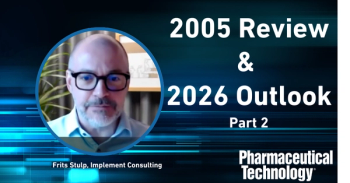
Neuland Laboratories Opens QbD-centered Process Engineering Lab
Featuring software, parallel automated reactors, and other tools designed to facilitate design of experiments, development of the design space, and better process understanding and control, the Hyderabad facility came online on July 20
Neuland Laboratories Ltd, a contract development and manufacturing organization specializing in APIs, custom intermediates, and custom manufacturing solutions has started up a new process engineering lab at its R&D center in Hyderabad. The goal of the new facility is to support the pharmaceutical quality by design (QbD) approach to drug development, by featuring instrumentation, software, and systems designed to facilitate the use of QbD for drug substances and intermediates development.
"Our new process engineering lab integrates the key attributes of QbD: Process understanding, process control, and continuous improvement with advanced equipment, Design of Experiments Software, and Design Space methodology, to optimize process design, operations, and productivity," says Saharsh Davuluri, Joint Managing Director at Neuland.
The new facility features the following:
· A stirred, controlled reaction calorimeter from the HEL Group that measures the rate of heat release during reactions
· Automated parallel HEL reactors that enable a chemist to perform multiple experiments at temperatures ranging from -60 oC to 225 oC
· A thermal screening unit (TSU), which indicates the thermal stability of chemicals and safe processing temperatures. Ideal for risk analysis, the TSU uses only 0.5-5 g of sample.
"This important addition to our capabilities will better enable Neuland to develop cost-effective procedures and quality products, meet regulatory requirements, improve scale-up efficiency, and accelerate time to market," says Dr. Ravi Ponnaiah, President, Science and Technology.
As he explains, a QbD approach includes three fundamental elements:
1) a clear understanding of the target product profile;
2) determination of critical quality attributes (CQAs) and
3) ensuring that processes and products remain within defined range limits.
Continual risk assessment of all aspects of a process, from the quality of the raw materials to the process parameters and their potential effects on CQAs enables continuous improvement of processes and products.
A QbD program relies on applying this information to develop a design space and a process control strategy, continually monitoring the process to assess its capabilities, introducing changes to improve product quality, cost, and process efficiency.
Source:
Newsletter
Get the essential updates shaping the future of pharma manufacturing and compliance—subscribe today to Pharmaceutical Technology and never miss a breakthrough.




